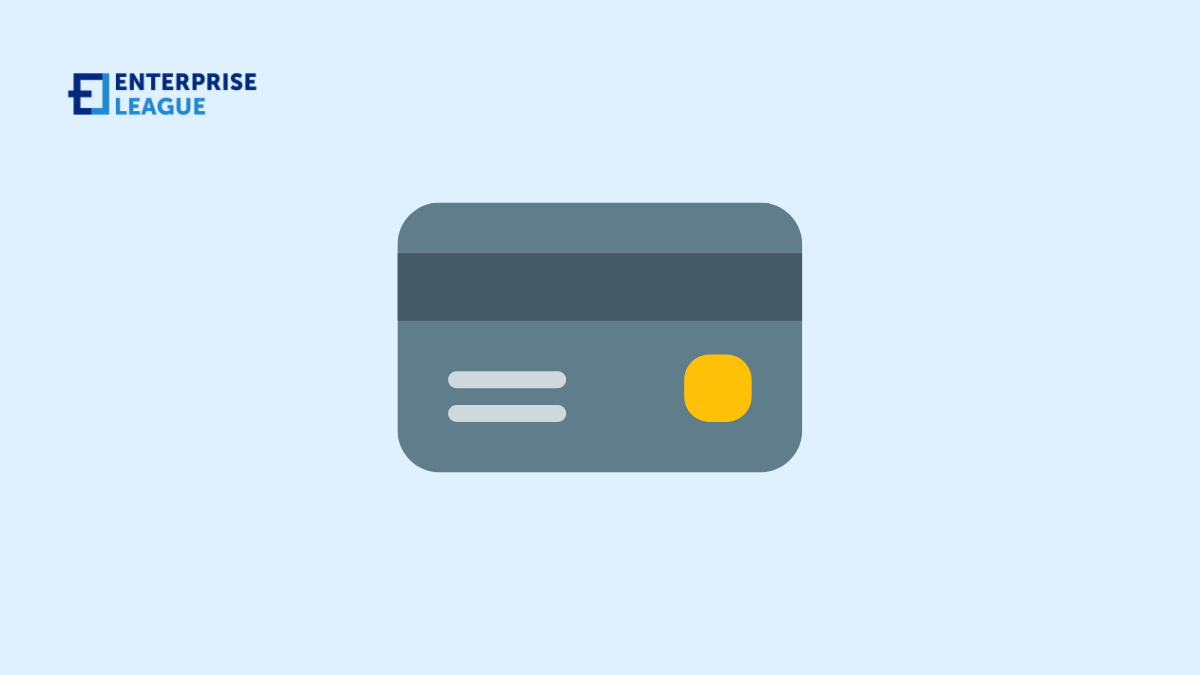Virtual credit cards: Can they revolutionize the financial market?
October 05, 2022

Virtual credit cards are one of those faucets that have been turned on in the business world and left running. Paper-based payment processes and manual payment procedures are becoming less favorable for businesses, particularly with the catastrophic event of COVID-19.
As a result, the post-pandemic world is moving towards a cashless society with many businesses opting for digital and contactless payment only. The growth of digital payments is proving to create this shift to a cashless society, with 13% of people using cash for most purchases.
How have virtual credit cards revolutionized the financial market? What will we expect from businesses when it comes to future payment processes?
What are virtual credit cards?
A virtual credit card is a temporary credit card number. It’s used by consumers while shopping online. These disposable card numbers are a great option for those who are particularly conscious about their own bank details. With virtual credit cards, it helps avoid a data breach or having to make payments through connections that may not be so secure.
Many are worried about the safety of their financial details, which has caused the financial market to reconsider how money is exchanged safely. Such safety precautions include two-step factor authentication and biometric banking.
How do virtual credit cards work?
How does a virtual credit card work? Chances are, you might not have come across it before and therefore have no clue how it works. With that in mind, here’s a brief how-to:
- Request a virtual credit card through your credit card provider, if it’s offered.
- You’ll receive a randomly generated card number with an expiration date and security code.
- Use this information to check out online on any site as normal that accepts credit cards as payment.
The beauty of virtual credit cards is that any business that accepts credit cards, will take this virtual form of payment.
Once the payment has been made, the money will come out of your account as usual. It’s easy enough to get an instant virtual credit card nowadays as this payment process is no longer just for multinational, large corporations to use.
Businesses before virtual credit cards
As already mentioned, many customers have fallen victim in part due to data breaches occurring more frequently than ever before. The US is one that suffers from the most data breaches, with 12.4 million users affected in 2021 alone.
A lot of businesses opted for paper-led payment processes before the whole world went remote during the pandemic. It’s a legacy that’s been left behind by COVID-19. While it may have been difficult for businesses to adapt initially, it’s created a hybrid working environment.
Similarly, the way businesses now operate payment processes has changed, in part by the pandemic but also due to the rise in security breaches. Companies aren’t able to guarantee they are fully impenetrable from hackers, which means they need to find ways to protect their customers further.
Revolutionizing the market
Virtual credit cards have revolutionized the financial market by providing an opportunity for consumers to lend money quickly and easily. This is a change that consumers have embraced due to our expectations as a society, which have grown substantially.
Being offered multiple payment methods has helped contribute positively to customer experiences and managing those expectations.
For lenders of finance, they are able to onboard their customers a lot quicker. It also offers the ability for consumers to use a virtual payment method whereby they don’t need a physical card.
Lenders also benefit from the additional data they receive from these virtual credit cards. It’s helping provide the insight needed to deliver a customer-centric experience, which helps in a competitive market. With business relationships between customers being important, it’s no surprise that virtual credit cards have taken to the financial market so well.
It’s worth noting that consumers are embracing virtual payments in general. A good example of this is cryptocurrencies. Though it’s not exactly the same as virtual credit cards, cryptocurrency has grown in popularity over the years. Currently, 46 million Americans own a share of Bitcoin. That’s 22% of the adult population.
How virtual credit cards are changing the game
With the evolution of digital processes changing the way we do everything in life, how are virtual credit cards changing the game? What are the mutual benefits gained for both businesses that offer them and the consumers that use them?
Efficiency
Manual processes take time and that is the case for most operations in business. Even consumers when faced with a manual process, likely groan with frustration. As a society, we’re becoming so used to automation and quick service that to revert back to anything manual is a headache.
Virtual credit cards provide efficiency and help to automate a lot of the labor-intensive tasks that businesses have to manage when it comes to offering physical credit cards to customers.
Reaching a larger audience
With a virtual credit card, its primary use was to help multinational businesses make payments to suppliers and clients through the most secure and efficient means. A virtual credit card being used more broadly allows businesses to reach a larger audience. Credit cards, they’re universal, meaning they’re used as a payment method for most purchases.
Virtual credit cards provide efficiency and help to automate a lot of the labor-intensive tasks that businesses have to manage when it comes to offering physical credit cards to customers.
Increased security
Security is something that everyone is concerned with when it comes to sensitive information. Virtual credit cards provide that extra layer of security that provides peace of mind to consumers who are actively making purchases online.
The benefit of virtual credit cards is that they offer a unique 16-digit card number each time that expires once the payment has been completed. They also have parameters such as length of time for use and the type of merchant that it is used on.
Convenience
Virtual cards work effortlessly with digital payment processes already in place. From contactless payments to mobile wallets. Being able to simplify the payment process for consumers, employees, and businesses, is helpful to spend without the hassle.
The use of virtual credit cards is applicable in various scenarios whether it’s paying for dinner during a client meeting, to paying for business transport.
Introducing your business to virtual credit cards
If you’re a business looking to introduce virtual credit cards for your consumers, then it’s very easy to do so. Introducing virtual credit cards for employees helps the business in several ways, including the following:
- Control over credit card spending – Credit cards are created specifically for the employee in question. That means a spending limit is applied where needed.
- Access to valuable insights – Virtual credit cards open the doors to data, which is helpful for a business to understand the spending habits of employees. It means businesses are able to intervene when necessary.
- No need to chase for credit card receipts – Credit card receipts are logged immediately by the employee. This helps speed up the expenses process and avoid chasing down credit card payments.
More must-read stories from Enterprise League:
- How successful businesses can give back to the community.
- Creative customer appreciation ideas for small businesses.
- Educate and entertain yourself with the best business movies.
Related Articles
Workers’ Compensation Costs for Factory and Warehouse Forklift Accidents
Forklifts play a central role in day-to-day operations across factories and warehouses, but they also create a significant risk of injury. When a forklift overturns, strikes a pedestrian, or drops a load, the financial impact reaches far beyond the immediate medical...
Delayed Construction Injury Reports: Impact on Workers’ Comp
Construction work carries unavoidable risks, which is why workers' compensation exists to protect employees after an injury. But one factor can alter the entire outcome of a claim: delayed reporting. In the construction industry, where injuries often occur in...
Sponsoring Employees for Green Cards: Small Business Considerations
For many small businesses, sponsoring a foreign employee for a green card can be a strategic investment. As industries grow more competitive, retaining skilled workers becomes increasingly important. Green card sponsorship offers long-term stability for both employer...
Workers’ Compensation Costs for Factory and Warehouse Forklift Accidents
Forklifts play a central role in day-to-day operations across factories and warehouses, but they also create a significant risk of injury. When a forklift overturns, strikes a pedestrian, or drops a load, the financial impact reaches far beyond the immediate medical...
Delayed Construction Injury Reports: Impact on Workers’ Comp
Construction work carries unavoidable risks, which is why workers' compensation exists to protect employees after an injury. But one factor can alter the entire outcome of a claim: delayed reporting. In the construction industry, where injuries often occur in...





